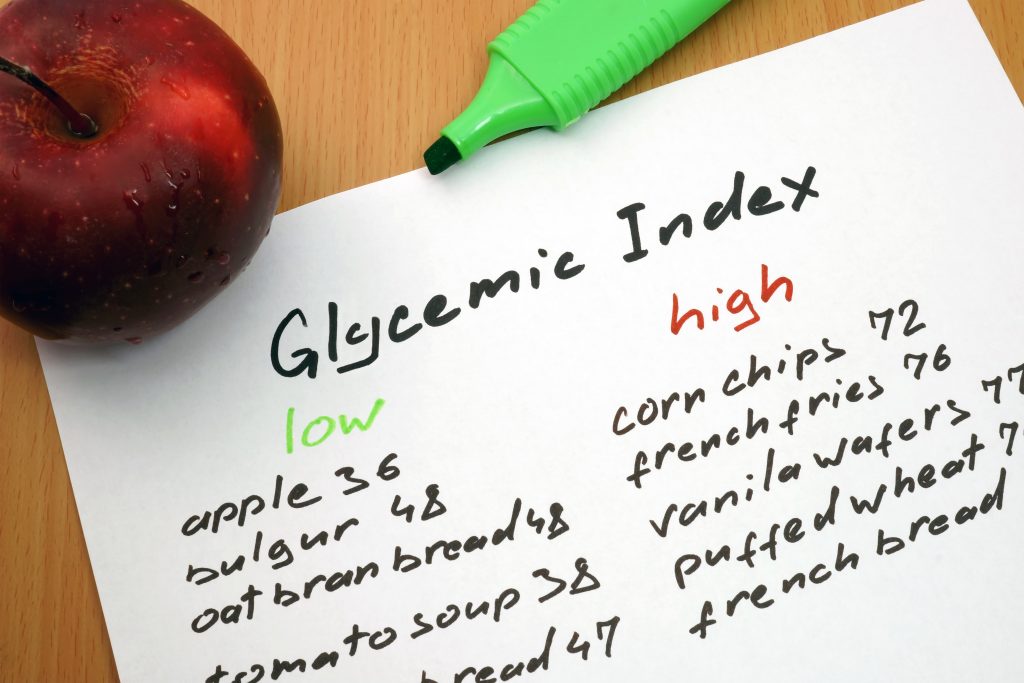Most foods have some carbohydrates (sugar), except for fats and oils.
Depending on the type of sugar in the food your blood sugar will spike immediately or raise at a slower pace.
This is where the glycemic index (sugar scale) comes in handy.
What is the Glycemic index?
Glycemic index or GI tells you how fast or slow a food raises your blood sugar after eating it.
Foods get their ranking based on how they compare to a reference food. The reference food used is glucose or white bread.
A food with a high GI raises blood glucose more than a food with a medium or low GI.
A carbohydrate-rich food is ranked based on its glycemic index score as follows:
It is best to eat foods that have low or medium GI foods for health. This helps in sustained weight loss as well as maintain stable blood sugar levels.
What happens if you choose foods high on the glycemic index? 3 Things
1. Sugar ”highs” & ”dips”:
Your blood sugar tends to spike within a short span of eating the food giving you a sugar ”high”. This is immediately followed by a sugar crash.
2. Hunger:
You will feel hungry often, which can lead to frequent food intake. This leads to weight gain.
3. Increased risk of diseases:
Eating foods with a high glycemic index increases the risk of diseases. Some common diseases include certain types of cancers, diabetes, heart diseases etc .
But don't be alarmed, with some awareness and planning you can maneuver your way to stable blood sugar. Here are some tips to keep your blood sugar stable.
3 Tips to choose low GI foods that stabilize blood sugar
1. Plan your meals:
Combine high carbohydrate meals with protein-rich foods. Presence of protein can slow down digestion of carbs. This results in slower release of sugar into the blood stream.
2. Choose fiber:
Choose foods with high dietary fiber such foods have a low or moderate glycemic index.
Some examples include:
- Dried beans and legumes (like kidney beans and lentils)
- All non-starchy vegetables
- Some starchy vegetables like sweet potatoes, most fruit
3. Include non-carb foods:
Meats and fats don’t have a GI because they do not contain carbohydrates.
The Glycemic index is useful for diabetes patients and for those trying to lose weight. It is also a useful tool to eat healthy.
But not all foods with low glycemic index are healthy.
For example, a bar of milk chocolate may have a glycemic index of 49. This is a low score for GI, but it delivers little when it comes to nutrients.
Be mindful, choose foods that deliver the most nutrition. Use this plan along with the GI to avoid confusion.
Yours in Health,
Danette
P.S. Please share this info. with your friends and I love reading your comments below. Do you pay attention to the Glycemic Index?






